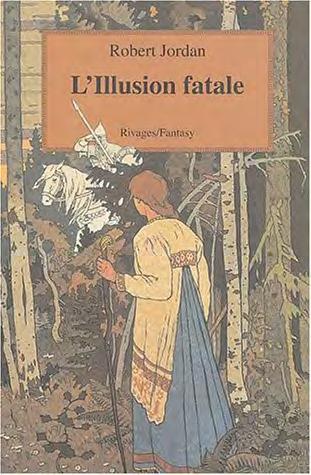
7 minute read
Telling a Story Through a Single Picture: My Favorite Wheel of Time Covers by Christopher J. Garcia
While The Wheel of Time has about 30,000,004 ideas floating throughout it,
each container for those ideas requires a wrapper, and those wrappers have roles to play, and those roles are difficult to untangle from one another. Covers for books in a series are difficult, because you not only have to deal with the book you’re covering, but also the entire series, and at the same time, the genre, and the mode that attracts buyers who are new to the series, the genre, and perhaps even the format. This makes the cover artist the greatest tightrope walker not named Wallenda. Let me start with an incredible gimmick. Juniper Books released all fifteen books (the fourteen main novels and the prequel) with rather simple, I’d almost go uninspired, covers. Simple until you put them all together, in order, on your bookshelf. The image they present is amazingly beautiful, a stunning dragon and the Wheel of Time in that familiar font blazing across them. It’s one of the most amazing spine designs I’ve ever experienced, and I’m seriously considering buying the entire series from Juniper, even though I have no room for such a thing. This one is an artifact . . . well, fifteen artifacts as one artifact. The most iconic image for me is the cover for The Eye of the World, 1990, by Darrell Sweet. I met him in 2007, and he was a wonderful man. Sadly, he passed a few years later. The image that most of us know is only the front cover, which is a strong image. It is dark, with Moraine and Lan starkly silhouetted against a full moon, the very model of a hero and his squire. It’s a beautifully constructed image, though it’s not the entire image. The back portion includes the rest of the party at their hooves and more of a, if not exactly lush, a verdant set of hills and valley, a set of fir-like trees piercing up into the sky. Overall, it is an image that feels precisely weighted: humans and nobility on the right; darker permanence on the left. I
Advertisement




love it. A lot of countries version use the original Sweet art and just put their localized language for the titles and such. Bulgaria does this, with a frame to each, and somehow, it’s elevating some of the weaker covers for me. A Crown of Swords is a cover that speaks very much to the flow of the series. Rand, standing there waiting, isn’t the attraction of this cover. It is Shadar Logoth in the background, sadly covered over by the large number of graphic elements in the version I have. This is easily the most gothic cover I’ve ever seen. I happened to post about the series on Facebook and a friend from my museum days noted that she went to high school with the son of Darrell K. Sweet, who happened to also be Darrell Sweet, and who also happened to be the model for Rand in this one! Sweet’s original Crossroads of Twilight was one of my least faves of all the Wheel of Time covers, but the Macmillan eBook edition has a striking cover by the amazing Greg Ruth. He nailed the image of Perrin walking away from his axe, now lodged in a tree. It’s a powerful image, and one that so eclipses the original cover in subject and tone. They got fourteen different artists to do covers for the audiobooks, and this and Sam Weber’s The Shadow Rising are easily my two faves. L'Illusion Fatale, the French version of Lord of Chaos, features an amazing cover by Ivan Bilibin. It’s got that old world, old fantasy charm, and it says something about the ways of the book. It is decidedly motioning towards Lord of the Rings-style imagery, but adding this even older feel, an almost Nouveau sensation. I love it. The French Payot editions actually have some really neat stuff going on, and one of the best of them is L'oeil du Monde, which is The Eye of the World, of course. It’s got a wicked Bilibin cover again, but this one isn’t so much a Nouveau feel as it is a Peter Max, psychedelic freak-out with a Medieval knight, which both does and doesn’t fit. It fits a feeling, but certainly not the story. I love this cover, though, so hard. I know nothing of Russian Nouveau artists, and Bilibin apparently was the best of them. These were basically yanked from his oeuvre and used as covers, and they feel right, even if they’re not quite right. The recent Tor version, where there is a single base image, the Great Serpent eating its tail and The Wheel, under a single-color wash, are kinda dull to me, though I understand what they are going for. They sorta took an interesting twist. Instead of the covers having to do the work of saying what the books are about or present anything other than the fact that they’re The Wheel of Time, they just made sure ya knew that these were Wheel of Time books and that’s all. On one hand, it’s lazy, on the other is really all that matters. There’s a 2021 paperback version from Orbit that I think does a little of what Tor did with their take, but much smarter. It’s The Great Serpent and Wheel, but instead of being a close-up and color wash, it’s over a mist-shrouded mountain and valley area. I can see why some would give this one low marks, but I think it’s beautiful, and allows the story to tell itself, but at the same time, it puts you in the proper frame. I’m all for that. The Dutch versions do the same thing and it’s fantastic. Those might be my favorite covers for the series. If the French covers are awesome, the German covers are awful. They have this Choose-Your-Own-Adventure vibe that just doesn’t play. The one exception? Die Heimkehr, which is the second part of the US versions third book, I think. It’s a lovely cover, I think from about 2015, and it’s the only one that pops out. The recent Piper eBook editions of Das Rad der Zeit have covers that give hints as to the content, while not battering you over the head with that. At the same time, they use beautiful mid2000s fantasy graphic design to impressive effect. The Finnish covers are incredibly stiff, save for one, Tornin Salaisuus (The Secret of Tower) which is so out of place with the others, but sure does give the proper sensation. The Japanese covers are also
fairly stiff, but at the same time, they fit in well with the kinds of covers you find on both Japanese print books and manga. One of the things I like about the Japanese covers is the care to establish a Japanese sense to the characters, each book having one character presented in that classic Japanese stationary movement form that has made their cheap-side animation so awesome.

The Polish covers are clearly influenced by Darrel Sweet’s originals, but they sort of go in a different, most distant direction. The covers for Triumf Chaosu (Triumph of Chaos, part one of the translation of Lord of Chaos) and Wichry Cienia (part two of Crossroads of Twilight) are both well done, and they both clearly hit on elements that the original covers did, but with a style that better reflects how the stories are read by Polish readers. The Swedish covers are interesting because you could almost swap them out for Star Wars Episodes 1 through 3 novelization covers. They’re well rendered, but they’re not Wheel of Time covers in feeling. There’s one that looks exactly like a poster for Revenge of the Sith, and another that looks like the start of a lightsaber battle. Odd choices, those. The Italian ones are dull, save for the final three, and especially Presagi di Tempesti. That one’s gorgeous in every possible dimension. I think it’s in my top five. Having dug so thoroughly into the covers from all over the place, what have I learned? Well, localization will often lead to choices I don’t understand, and putting it into a form that clearly is drawing on other popular franchises is highly helpful, though produces covers that those of us who know the source material won’t get. Then again, the cover ain’t for us, you know; it’s for the uninitiated.








